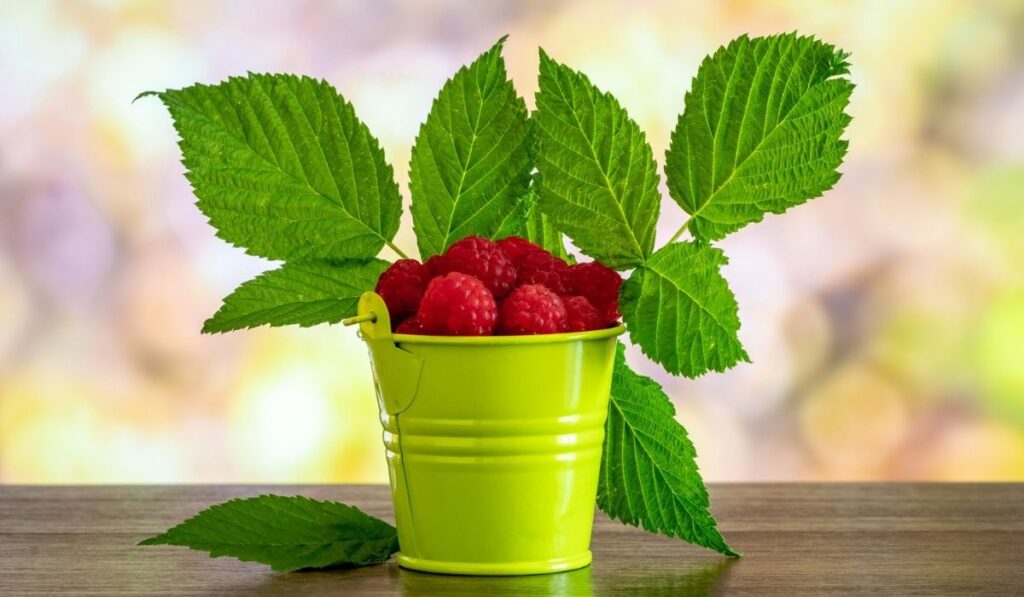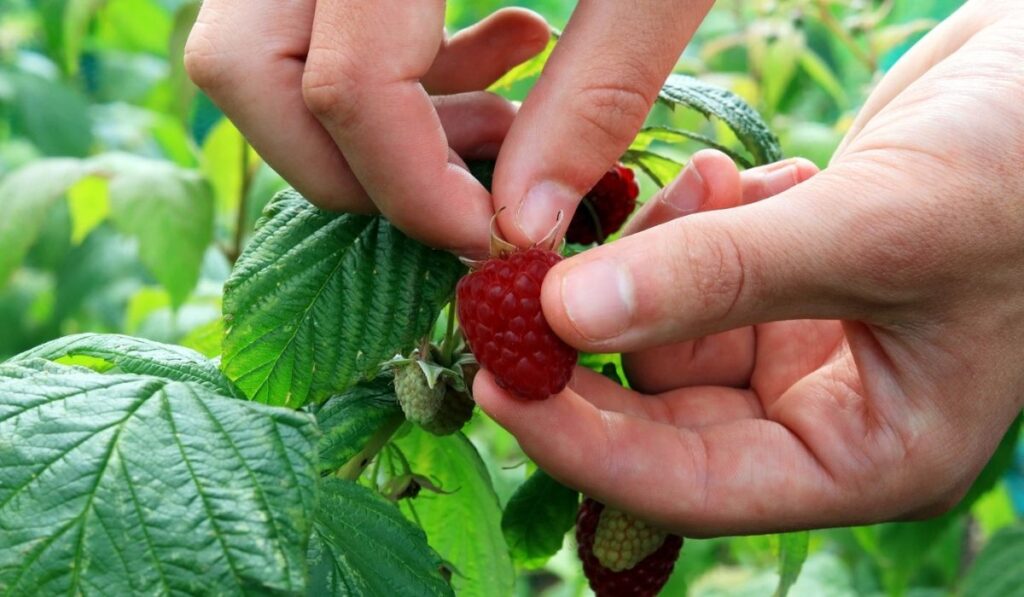Raspberries are a popular fruit that is often used in pies, jams, and other desserts. They’re also a great source of vitamins and minerals — and low in calories and fat. Raspberries come in many different colors, including red, black, and golden. Each color has its unique flavor. Red raspberries are the sweetest, while black raspberries are the most tart. Golden raspberries are a mix of sweet and tart.
In the United States, the raspberry season depends on the location. Summer-bearing raspberries in the southern states ripen between May and July. Raspberries are in season from late May to August in the northern states. Different species of raspberry bushes produce at different times.
Now that you know when raspberries are in season, let’s take a closer look at what makes these berries so special. We’ll consider how to pick and store them, as well as how to prepare them in your favorite treats.
What Are Raspberries?

Raspberries are a type of fruit that belongs to the genus Rubus. They are known for their tart and juicy flavor, and they’re often used in pies, jams, and other desserts. Raspberries are a good source of vitamins C and K, as well as fiber and manganese.
Raspberries come in a variety of different sizes and shapes. The most common type of raspberry is the red raspberry, which is also known as the summer raspberry. And when not eaten ripe, freeze-dried raspberries and raspberry jam (both on Amazon) are great ways to keep this fruit in your diet.
That said, ripened red raspberries are typically round in shape and have a diameter of about a 1/2 inch (1.3 cm). Black raspberries are smaller than red raspberries and are oval in shape. Purple raspberries are intermediate in size between red and black raspberries.
Despite its name, the raspberry is not really a berry at all — it’s a fruit drupelet. This means that the raspberry is actually made up of many smaller fruits. Each of these fruits has its own seed. There are about 100 seeds in each raspberry.
The raspberry is a member of the rose family, which includes other fruits such as apples, pears, and plums.
When Are Raspberries in Season?
Raspberries are grown in many parts of the United States, including California, Oregon, Washington, Idaho, and Montana. They are usually in season from May to August, but they reach peak season based on their location.
The summer-bearing raspberries, which are the most common, ripen over a period of two to three weeks between late May and mid-June in the northern states and the entire month of July in the southern states.
The so-called “ever-bearing” raspberries, which include both fall-bearing and primocane-fruiting varieties, have two crop periods: An early summer crop ripens over three to four weeks in mid-June to late June or early July, and a fall crop ripens over six to eight weeks from early September until frost.
How to Buy and Store Raspberries
When buying raspberries, look for plump berries that are fully red (or black, depending on the variety). They should be free of mold and bruises and have the green caps attached. Raspberries are very delicate, so handle them gently.
Generally, the fruits are not washed until just before eating or for use in a recipe, as washing can cause them to break down and become mushy.
If you need to wash them, do so gently in cool water and dry them immediately. Store them in the refrigerator in a single layer on a paper towel-lined plate or in a colander lined with paper towels.
Use them within a day or two for the best flavor. Raspberries are found in the fresh fruit section of the grocery store and supermarkets.
How to Pick Raspberries
The process of picking raspberries begins with a bit of preparation. First, make sure you have the proper clothing. Raspberries can be quite thorny, so wear long pants and sleeves to protect your skin. If you’re picking in hot weather, a hat and sunglasses will help keep you cool and protected from the sun.
Next, gather your supplies. You’ll need a container for collecting the fruits, as well as some sort of bag or basket for carrying everything. Finally, head out to the raspberry patch!
Tips on How to Pick Raspberries

- Look for ripe berries. Raspberries are ripe when they come off the stem easily and are a deep red color. Avoid any that are white, green, or showing signs of mold.
- Gently cup your hand around the raspberry and twist to remove it from the stem.
- Place the raspberry in your container. Be careful not to crush them.
- Repeat until you have as many raspberries as you need.
- Avoid placing berries in the sunlight, as this will cause them to deteriorate more quickly.
- Eat your raspberries as soon as possible for the best flavor, or store them in the fridge for up to a day or two.
How to Prepare Raspberries
Raspberries can be eaten fresh or used in a variety of recipes. The following steps can be used to prepare them for consumption:
- First, remove any damaged or moldy raspberries to prevent them from spoiling the rest.
- Gently rinse the berries in cool water and dry them on a paper towel. Don’t soak the fruits, or they will become mushy.
- Remove the stem from each raspberry. You can do this by gently pushing on one end of the raspberry.
- Don’t thaw frozen raspberries before washing them, as this can also make them mushy.
Are Raspberries Good for You?
Raspberries are not only delicious but they’re also packed with nutrients. Just one cup of raspberries provides over half of the daily recommended intake of vitamin C, as well as fiber, manganese, and copper. Raspberries are also a good source of ellagic acid, a compound with potential cancer-fighting properties.
The leaves of the raspberry can be brewed into a tea that has been used for centuries to treat uterine problems associated with pregnancy, childbirth, menstruation, and menopause.
Some people experience allergic reactions to raspberries, so it’s important to test for allergies before consuming them in large quantities. If you experience any adverse effects after eating raspberries, discontinue use and consult a doctor.
Fun Facts About Raspberries
You may believe you know a lot about raspberries, but here are some facts about them that you probably didn’t know:
- The raspberry is actually not a true berry, but rather an aggregate fruit. This means that each fruit is actually made up of many smaller fruits called drupelets.
- Raspberries are members of the rose family, along with cherries, plums, and apples.
- The world’s largest producer of raspberries is Russia, with an annual production of 174,000 tons.
- Raspberries have been grown for centuries and were first cultivated in Europe in the early 18th century.
- In ancient times, raspberries were used as a medicine to treat fevers and other ailments.
